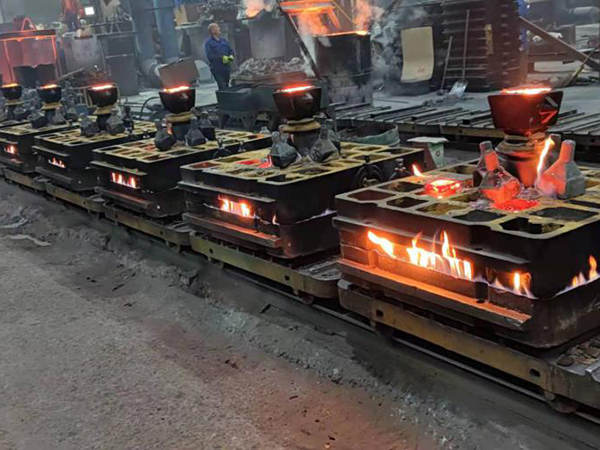Sand Casting Alloys An Overview
Sand casting is one of the oldest and most widely used metal casting processes. It involves creating a mold from sand, where molten metal is poured in to form a specific shape. The choice of alloy is crucial in determining the properties of the final cast product, including strength, ductility, corrosion resistance, and thermal stability. This article explores various types of alloys used in sand casting, their characteristics, and applications.
1. Aluminum Alloys
Aluminum alloys are among the most popular metals used in sand casting. Known for their excellent fluidity, lightweight nature, and resistance to corrosion, aluminum alloys are ideal for a variety of applications. They can be categorized into two main groups wrought and cast alloys.
Common cast aluminum alloys include A356 and A380. A356 is notable for its strength and ductility, making it suitable for automotive components, marine applications, and aerospace parts. A380, on the other hand, boasts excellent wear resistance and ease of machining, making it a preferred choice in the manufacturing of consumer goods and intricate mechanical parts.
2. Iron Alloys
Iron alloys, particularly gray and ductile iron, are extensively used in sand casting due to their good castability and high machinability. Gray iron is characterized by its flake graphite structure, which provides good wear resistance and dampens vibrations. This makes it ideal for engine blocks, machine bases, pipes, and other heavy-duty applications.
Ductile iron, or nodular cast iron, has improved ductility and tensile strength compared to gray iron. It achieves this through the addition of small amounts of magnesium during the casting process. Ductile iron is often used in the manufacturing of gears, valves, and various automotive parts, thanks to its ability to withstand stress and impact.
3. Bronze Alloys
Bronze is another important category of alloys used in sand casting. Typically composed of copper and tin, bronze exhibits excellent corrosion resistance and wear properties. Its low friction coefficient makes it ideal for producing bearings, bushings, and gears.
sand casting alloys

Silicon bronze, which includes silicon as an additional alloying element, has enhanced corrosion resistance and is often used in marine applications. The unique combination of properties found in bronze alloys makes them suitable for applications ranging from architectural features to intricate jewelry.
4. Magnesium Alloys
Magnesium alloys are gaining popularity in sand casting, particularly in automotive and aerospace industries where lightweight components are essential. These alloys offer a high strength-to-weight ratio and superior machinability. Commonly used magnesium alloys include AZ91 and AM60, which are known for their good casting characteristics and mechanical properties.
The low density of magnesium alloys leads to significant weight savings in components, improving fuel efficiency in vehicles and aircraft. However, these alloys require careful handling during the casting process, as they are flammable and susceptible to oxidation.
5. Other Alloys
In addition to the aforementioned metals, there are various other alloys used in sand casting, including nickel-based and titanium-based alloys. Nickel alloys, such as Inconel, are prized for their high-temperature resistance and ability to withstand corrosive environments, making them essential in aerospace and chemical processing applications.
Titanium alloys, while more challenging to work with, provide exceptional strength-to-weight ratios and excellent corrosion resistance. They are predominantly used in the aerospace industry for manufacturing critical components where performance is non-negotiable.
Conclusion
The selection of alloy in sand casting is instrumental in defining the characteristics and suitability of the final product. With a diverse range of materials available, including aluminum, iron, bronze, magnesium, and specialty alloys, manufacturers can tailor the cast parts to meet specific demands. As technology continues to advance, innovations in alloy development and casting techniques promise even greater improvements in the efficiency and capabilities of sand casting processes. Thus, sand casting remains a vital manufacturing method in various industries, leveraging the unique properties of different alloys to achieve desired performance outcomes.
Post time:Abe . 05, 2024 14:47
Next:wet sanding resin
